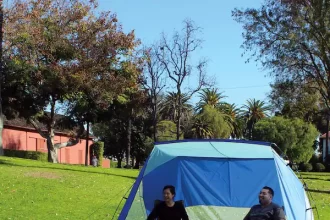Exploration, adventure, and broadening horizons have long been key components of travel. In the digital age, with the conveniences of smartphones, laptops, and ubiquitous connectivity, the experience of travelling has been enriched immeasurably. However, this digital luxury comes with its set of risks. Travellers are, more often than not, vulnerable to cyber threats. This essay seeks to guide you through the key elements of cybersecurity while you travel the world.
Understanding the Threat Landscape
Being on the move means connecting to various networks, many of which might be insecure. Whether in airports, hotels, or cafes, every connection poses serious risks. Additionally, if you’re in unfamiliar regions, you can attract the attention of online thieves wanting to profit from your confusion.
1. The Risks of Public Wi-Fi
Public Wi-Fi networks, especially those without passwords, are hotspots for cybercriminal activity. Due to a lack of encryption, data can be intercepted by hackers, possibly leading to the theft of login credentials, credit card information, and other sensitive data.
2. Physical Threats
It’s not just about digital interception. Physical theft of devices can lead to data breaches if not appropriately managed. A stolen laptop that isn’t password-protected can be a goldmine for personal data.
A Protective Arsenal: Essential Tools and Practices
1. Virtual Private Networks (VPNs)
VPNs encrypt your internet connection, masking your online activities. When travelling, using a reliable VPN service, such as Mysterium VPN, can ensure that even if you connect to an insecure network, your data remains private and protected.
2. Multi-Factor Authentication (MFA)
MFA provides an additional layer of security by requiring a second form of identification beyond just a password. Even if someone cracks your password, they’d need the second identifier, often a code sent to your mobile, to access your accounts.
3. Device Encryption
Encrypting your devices ensures that even if they fall into the wrong hands, the data within remains unreadable. Most modern operating systems offer built-in encryption tools like BitLocker for Windows or FileVault for Mac.
4. Regular Backups: A Safety Net for Your Digital Assets
In our digital age, the value of data cannot be overstated. Our gadgets are full with information that is essential to both our personal and professional life, including priceless memories preserved in images as well as key papers and communications. It might be unnerving to think about losing vital data, especially when travelling when the hazards are continually rising.
Regular backups are crucial for many reasons other than just data preservation. Protecting digital legacies, ensuring continuity, and minimising interruptions are the objectives. Think about the following instances:
- Device Theft: While exploring a bustling market or navigating a crowded train station, your device might get stolen. With a backup, the loss is monetary and not data-related, a silver lining in an otherwise gloomy situation.
- Hardware Failures: Devices, especially when exposed to travel’s rigours – from sandy beaches to humid rainforests – can malfunction. Regular backups guarantee that data loss will not result from hardware breakdowns.
- Malware and Ransomware: Cyberattacks can compromise or lock your data. With a backup, you can restore your device to its pre-attack state without paying ransoms or losing data.
When considering backup solutions, it’s essential to diversify:
- Physical Drive Backups: Portable hard drives or SSDs offer a tangible backup solution. Ensure they’re stored in a different location from your primary device for added safety.
- Cloud Backups: Services like Google Drive, Dropbox, or iCloud provide remote backup solutions. They have the added advantage of accessibility from any device with internet connectivity. However, always ensure the use of strong passwords and two-factor authentication for these services.
5. Password Management
Using unique and complex passwords for different accounts is vital. These credentials can be saved and automatically filled out with the aid of a password manager, assuring ease and security.
Safe Practices When Abroad
1. Limit Sharing on Social Media
It’s tempting to share every moment of your travels real-time, but this could alert potential thieves to your absence. Save major updates for when you return.
2. Avoid Public Charging Stations
USB charging stations, especially in public areas, can be compromised to access data on your device. Always use your charger.
3. Turn Off Automatic Connectivity
Disable automatic connection features on your devices. This protects your device from unintentionally connecting to dangerous or insecure networks.
4. Use a Physical Privacy Screen
When working in public areas, a privacy screen limits viewing angles, ensuring that only the person directly in front of the screen can see its contents.
5. Be Wary of Physical Surveillance
Always be aware of your surroundings. Shoulder surfers can glean passwords and other sensitive information just by watching.
Conclusion: The World Awaits, But So Do Cyber Threats
The call of distant shores, the allure of unfamiliar cultures, and the exhilaration of novel experiences have always driven the human spirit to explore. In order to save memories, direct our journeys, and build relationships with loved ones, our digital travelling companions—such as telephones, computers, and tablets—play an increasingly significant role. Yet, beneath the surface of convenience, lurks a shadowy realm of cyber threats waiting for a lapse in our defences.
Every connection we make, every app we download, and even the simple act of charging our devices can expose us to vulnerabilities. As the digital realm intertwines more intricately with our travel experiences, the lines between physical and digital safety blur. Cyber threats no longer remain confined to our screens; they have tangible, real-world implications. Plans for a trip can be derailed by a bank account compromise, but an identity theft can have long-lasting effects.
However, with awareness and preparation, these threats are manageable. Tools like Mysterium VPN provide peace of mind in addition to digital protection. It’s about recovering the original travel mentality, which places an emphasis on spontaneity, flexibility, and exploration, without continuously scanning for digital pitfalls.
As we step out into the world, ready to immerse ourselves in its vastness and beauty, let’s ensure our digital selves are as prepared and safeguarded as our physical beings. The journey of a thousand miles begins with a single step, and in today’s world, that step is also towards comprehensive cyber safety.















